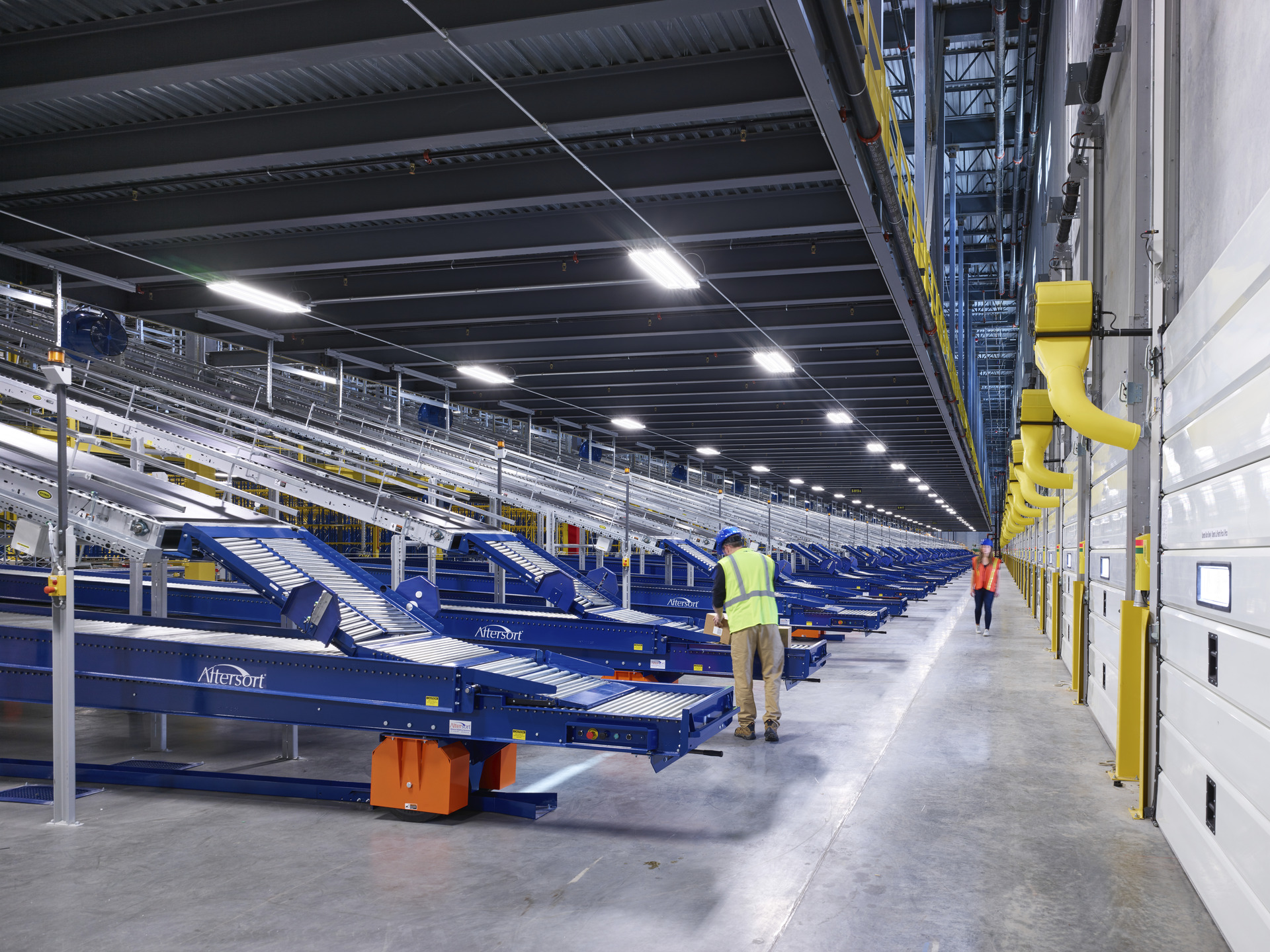Emerging Trends Affecting Warehouse Security Design
The landscape of warehouse security has evolved over the past five years to adapt to changes in the ecommerce sector brought on by the pandemic. Before, warehouses stored bulk shipments and large pallets. Today, warehouses are responsible for storing and transporting thousands of smaller personal packages. The security systems keeping both these products and employees safe have also changed, therefore prompting shifts in the building design to support those systems.
Strategizing for Safety
Unfortunately, “shrinkage” – products stolen by employees – and workplace violence incidents have increased in recent years, so many of our clients are now considering security implications throughout the entire design process. If the end goal is to keep employees safe and products secure, BRR works alongside clients to explore risk thresholds, functionality, security technology, employee experience and budgets during the course of their projects.
Every client has unique security needs. BRR helps clients determine what level of security is right for them. We start by asking questions like: What functional spaces do you need? How do you want to operate this facility? What level of security do you require? What level of risk are you willing to assume? The answers to these questions act as a guide for our team to incorporate security systems cohesively into the overall facility design. While these questions are asked and answered during programming, they are continuously considered and revisited throughout the entirety of the project.

Trends Fueling Security Innovation
Since 2020, ecommerce has continued to grow. Packages are getting smaller and lighter, increasing the potential for products to leave warehouse facilities. Today, preventing shrinkage is now vital to facility operations, affecting what type of security is needed within a warehouse. This could look like requiring employees to walk through electronic article surveillance scanners (EAS) strategically placed at exit points. The management of employee traffic flow in and out of the warehouse floor using directional turnstiles can be implemented to guide employees through specific security points throughout the facility. The separation of common and private spaces using badges and electronic locks have also become commonplace throughout the industry.
In addition to shrinkage, workplace violence has also increased. Companies are responding by taking additional steps to help keep employees safe and providing a sense of security to those most vulnerable on the warehouse floor. The addition of safe rooms using bullet-resistant materials in strategic locations within walls and doors is becoming more of a necessity than a luxury. Depending on location and what is stored within the warehouse, some clients have opted to incorporate security teams with guard stations and shot detection at strategic points within the design.
Customized Solutions for Unique Security Needs
The goal of increased security is to keep harmful items from entering warehouses and keeping valuable products secured within warehouses. At a minimum, metal detectors, EAS scanners and turnstile entrance and exit points support both goals. These are visual tactics that deter people from bringing weapons into the facility and taking products out. By reinforcing the physical process of checking in and out through a security check point, employees are more likely to follow safety and anti-theft guidelines. Bullet-resistant glass, fingerprint scanners, impact-resistant building materials and shot detection systems are all heightened security options for when the risk is elevated. These measures are more subtle, often going unnoticed until a breach in security has occurred. Rather than deterring crime, these measures can minimize its impact. Maximizing warehouse security uses a combination of several of these approaches.
Balance & Partnership are Key
In addition to enforcing safety, these systems must also work in conjunction with other factors like budgeting and employee experience. While warehouses are durably designed for high-traffic, we also consider employee experience to avoid creating utilitarian or prison-like environments with the goal of long-term retention. We balance the aesthetic with realistic functionality. Guiding clients through the design process and balancing their functional needs with their aesthetic goals is challenging. By fully understanding their security, operational and budgetary needs, BRR can help in the integration of security systems into their design while staying on budget.
The evolution of ecommerce and the increase in workplace violence incidents continue to impact industrial design. As security needs change so does the architectural design that supports those systems. Having an expert design partner guide you through the decision-making process is key for optimal end results – safe employees and secured product.



